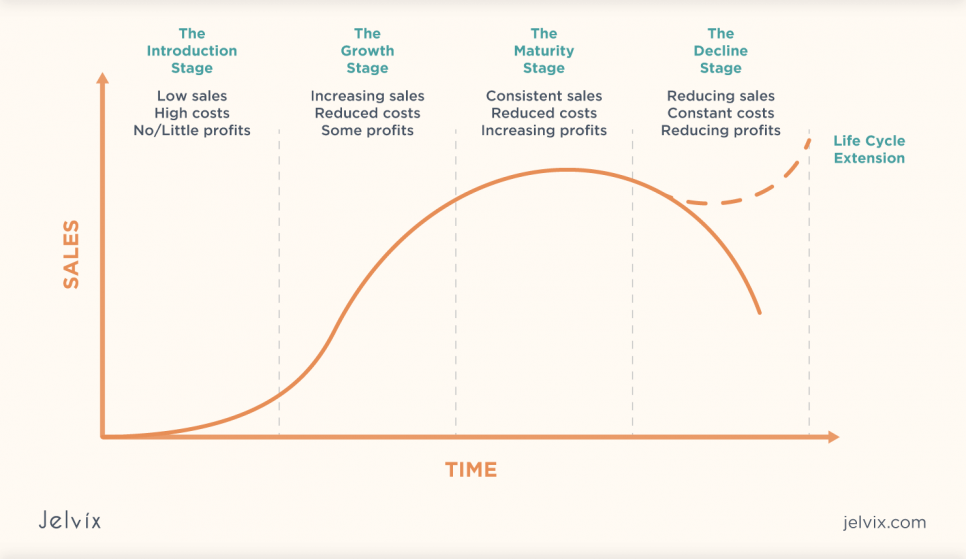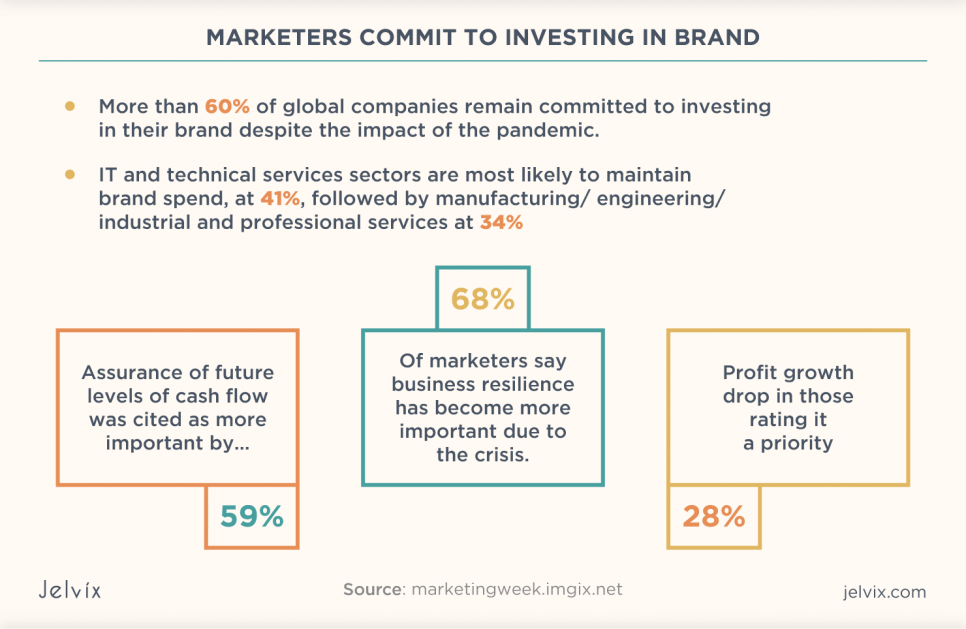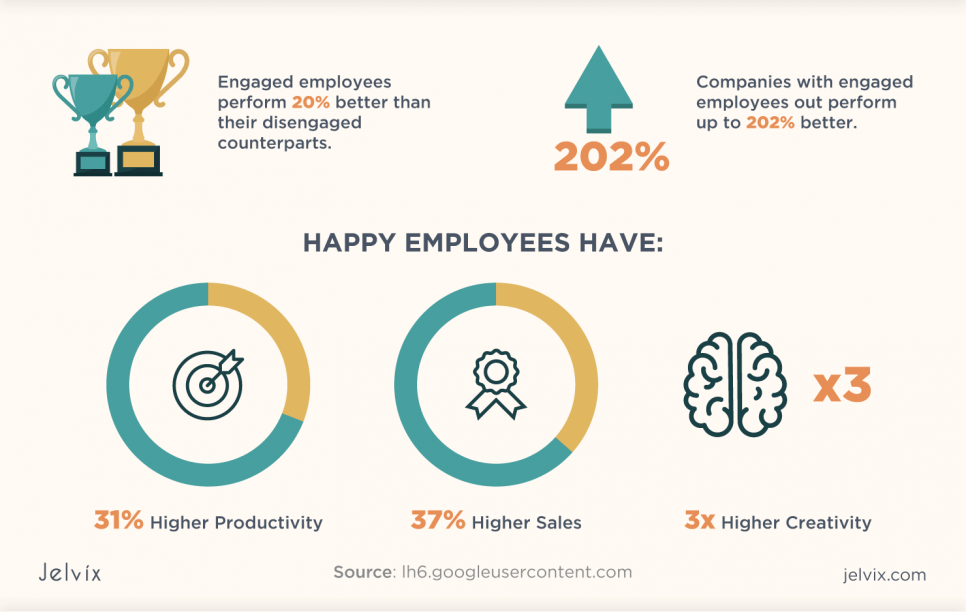The world of business is anything but stagnant, and, like the great white shark, businesses need to keep moving forward to survive. Following the global coronavirus pandemic, it has been especially challenging for many sectors to maintain growth, and 92% of small businesses stated that they had to pivot their operations during the crisis.
On the other hand, attempting to grow a business right now can be tricky, as it requires you to consider the latest digital trends and growing customer demands.
If you seek to grow your business but aren’t sure how to approach digitalization, keep reading. We’ve compiled some expert advice on how to grow a business that can help you achieve success regardless of the market you’re in.
What is Business Growth?
While year-over-year net operating profits are probably the single most reliable indicator of growth, there are several agile metrics available that can point to evidence of business growth.
Some of the most prominent ones include:
- Sales: the volume of individual transactions your business conducts with customers;
- Revenue: the gross income your business brings in over a financial period;
- Company value: your company’s net worth, established by your share price if your company is publicly traded or estimated by an auditor;
- Employees: the number of employees taken on;
- Customer base: the number of individual customers patronizing your business.
When viewed in a vacuum, none of these individual metrics offer concrete proof of growth, but together, they should provide a litmus test of the overall health of your business prospects. Companies can even grow business in one area while at the same time witnessing a decline in another.
For example, if your existing customers start making bigger purchases, your revenue will grow without increasing your customer base. Consequently, companies need to identify which areas are the most important for their long-term success. A new app developer, for example, might be happy operating at a loss for a certain period if it results in a growing customer base.
Why is Business Growth Important for Small Businesses?
Every company needs to grow its business to remain successful. Growth is evidence of the company’s ongoing competitiveness in the marketplace. Moreover, it helps provide the resources for expanding the range of products or services available to keep the company’s offering fresh and relevant.
Growth is arguably more critical for small businesses than their larger corporate counterparts since larger companies usually have more assets to fall back on to get through disruptions in the market. An emerging business based on a startup model will prioritize growth to get an early foothold in a crowded marketplace, after which it can begin making a profit from its customer base and cover all its operational costs.
Let’s discuss what digital transformation is , including strategy, trends, and implementation.
Ultimately, however, the type of growth that will be most desirable is dependent on the business growth stage that a company is currently at.
What are the Business Growth Stages?
There are many models for various stages of growth that businesses undergo, but the two that have proven to be especially instructive are the “four-stage” and “five-stage” cycles. Both provide a valuable forecast for the various progressions the business undergoes as it begins and matures, providing stakeholders and executives with a rough idea of the challenges they will face in trying to grow the business.
The Four-Stage Model of Business Growth
There are four principal stages of business growth that you need to consider if you choose this model.
Introduction
This is where a company begins its existence, starting with conceptualization and market research to establishing how to capitalize on a niche in the market with its products or services. At this stage, a company will probably have a small team juggling different roles among them. The challenges at this stage usually revolve around staff retention and making their operating budget stretch as far as possible.
Maturity
Should a business start finding success, its processes will be established, and it can operate without the day-to-day guidance of stakeholders and executives. The profits earned up to this point can provide enough funds to grow business in new areas and invest in new products, custom enterprise solutions, and even acquisitions.
During this stage, the business’s main challenge is to ensure it remains competitive in the face of innovation from competitors.
Decline and Renewal
This stage begins when a business first experiences a sustained decrease in revenues. However, if the company remains vigilant, this is by no means a disaster. During this stage, the company will need to start reassessing its position in the market and be prepared to invest in making changes to remain competitive, either by pursuing new markets or innovating its product lines.
However, if, for whatever reason, the owners don’t want to try and grow the business further, they may choose to sell the company.
The Five-Stage Model of Business Growth
This model of business growth outlines the key phases companies go through as they expand.
Existence
This first stage begins with ideation about the business along with planning for the scale of the company. It also may involve investment rounds and raising capital to help cover early operating costs and get the business off the ground.
Survival
This stage deals with the period when the business attempts to grow to the point that an operating profit can be secured. Generating profit through sales while still courting investment forms the main challenge at this stage.
Success
Once the company is financially stable and making sufficient profit to sustain itself, it enters the success stage. Ideally, a business wants to remain in this state for as long as possible.
However, this is also a period when the business is best positioned to pursue a more aggressive expansion strategy, so one of the main challenges is to develop human resources and business procedures to allow the company to grow business and scale up.
Take-off
If a company is successfully growing under optimum conditions, it may be able to reach the take-off stage. At this juncture, stakeholders will usually choose to either sell the business in an acquisition (often to a larger rival) or develop itself into a more concrete corporate business model.
However, failure to succeed in either of these endeavors can often preclude a regression in growth or outright collapse.
Resource Maturity
This refers to the stage when a company has grown to the natural limit of its current business model with a well-established market share. The main challenges regard keeping the company’s offerings relevant and ensuring that they’re in a position to adapt to future disruption in their sector.
6 Tips for Business Growth for Modern Enterprises
Growing your business isn’t easy, however, the right approach can ease this process. The Jelvix team has prepared a few tips to help you out.
Focus on Your Core Demographics
You might imagine that the fastest and most secure way to grow your business would be to pursue new audiences for your existing products. However, this can imperil the parts of the business model that you know will work for sure and risk watering down your appeal to your core demographics.
Your core audience is already predisposed towards the products, services, and USPs that define your business. These demographics are likely to provide you with steady sales and require lower marketing spending to secure conversions. Additionally, such core demographics are more likely to provide you with lifetime customers who feel that your products best meet their needs.
To establish your core audience, start with the data. Use the information you have saved about the current and previous customers, and try to work up a customer profile with the available demographic information. The only problem is that this data may produce somewhat superficial insights. Fortunately, social media is a fantastic resource for helping fill in the blanks about what defines your core customers.
The big social media platforms all offer analytics services that you can use to understand your core customers better and inform strategic thinking for targeting them with more focused marketing approaches. You’ll be able to view such data as gender, age range, and location and track the effectiveness of any social media marketing campaigns and the targeted advertising you’re operating to grow your business online.
Focusing on your core demographics can grow your business in the long term and ensure your business is viable in the face of disruption to the marketplace.
Discover proven strategies to efficiently scale your IT infrastructure, ensuring flexibility, performance, and cost-effectiveness as your business grows.
Leverage Social Media
Social media is a marketer’s dream and one of the best available resources for helping to grow a business. The number of social media users worldwide is projected to surpass 6 billion in 2028. Paid social media advertising is quickly becoming one of the main channels for audiences to discover new products, especially for younger demographics.
Another bonus offered by social media is that your brand and products won’t just benefit from direct marketing. You can engage the services of influencers to help market your goods to audiences with whom they share an intimate personal relationship.
Of course, the one downside of social media is that it’s hardly a secret anymore, so you have to contend with a lot of competition to get yourself noticed in people’s feeds. But with the right social media marketing strategy and some attractive content, you’ll be in a strong position to grow your business.
Privilege Lifelong Relationships
Moving on from concentrating on your core demographic, it’s also vital to strengthen these relationships to secure long-term customer relationships that you can rely on to sustain your profits through thick and thin. In the modern marketplace, consumer trust is lower than ever, with research showing that over half of all customers have less trust in the businesses they patronize.
At the same time, the cost of the average customer acquisition has risen by over 50% in the last half-decade. Given that the marketplace has never been more competitive, customer trust is now at a premium.
There is a variety of ways that you can repay customers for the trust they invest in your business with their continued purchases. A loyalty point scheme on your website is an excellent place to begin with, where customers accrue free credit off future purchases based on the value or quantity of the orders they place with you.
Likewise, discounts or free delivery for orders over a certain value can entice customers to increase their investment in your products and services.
Elsewhere, ensure that you’ve invested in effective CRM processes that can offer prompt, personable, and useful resolutions to customer queries or complaints, as these tend to be the areas where a customer is most likely to find fault with your business and potentially turn to one of your competitors.
Finally, when you’re confident that your customer experience is rock solid, you can devote more time to soliciting new audiences to grow your business, knowing that it’s not at the expense of your current clientele.
Build up Your Brand
Spending your marketing budget on direct sales and quarterly profits can undoubtedly yield results, but it won’t necessarily help your company evolve within the marketplace. By a certain stage, reinvesting profits to grow business should amount to more than simply indemnifying future operating costs.
Whenever you read about the latest startup achieving a runaway rise to fame, you can be sure that stakeholders poured their time and resources into building up their brand.
A simple place to start is with designs. You can use a branding or PR agency to outsource the design of your marketing materials, social media posting, and website to ensure a coherent aesthetic across every part of your business that’s visible to your audience. Consistency is crucial, and about 85% of companies say they have brand guidelines.
Follow this up by establishing your brand values and conceiving a mission statement, as the modern customer looks for their values to be aligned with the businesses they patronize. Also, bear in mind that you need to ensure your branding efforts help distinguish you from your competitors at every step.
Investing in your brand could also mean you grow your business by developing your line of products and services to help you pivot in the market and meet the needs of new demographics. Ultimately, an investment in your brand reflects your confidence in the business, which is something the audiences won’t overlook.
Build the Right Team
No matter how good your business model and products are, you’ll need the right talent to help bring your concepts to the market. This means more than just hiring the most qualified candidates, though. To build a team, you also have to develop a work culture that will motivate your employees to put their best efforts into the job.
Start by investing in your onboarding processes to ensure that new employees will be familiar with the work ahead of them. Follow this by implementing regular performance reviews from anywhere between a monthly and quarterly frequency so that your team can receive recognition for their achievements.
With the right systems in place for performance reviews and onboarding, you’ll find the job of scaling the business in the future to be much more efficient, while dealing with the employee turnover will also be more streamlined.
Perhaps most importantly, you need to offer staff benefits to incentivize talent to choose to work at your business over the competition. This could include paid holidays and health insurance to show your staff that you value their efforts beyond simple lip service.
Digitalize for Growth
Adopting digital tools and processes is, now, essential for business growth. Digitalization can help you optimize operations, improve customer experience, and provide data insights that will allow you to make better decisions. For instance, you can automate repetitive tasks with AI or implement customer relationship management software to make your company more efficient. Even small digital upgrades can boost productivity and reduce operational costs for your business.
However, if you have doubts about the competencies of your in-house staff for a particular project, don’t be afraid to outsource the work to the right professionals. Delegation is a vital skill that has to be mastered to grow a business successfully.
How Digital Implementation Can Boost Your Profits
In today’s digital age, enterprises start actively exploring how to develop a digital transformation strategy, as it can lead to significant profit growth. By optimizing processes and improving customer experiences, digital transformation helps companies drive efficiency and unlock new revenue streams.
Automation
One key area is automation, which helps reduce operational costs. For example, AI-powered customer service systems allow businesses to operate 24/7 without increasing labor costs, while automating administrative tasks like invoicing or inventory management frees up valuable resources.
Data Analytics
Advanced data tools give businesses insights into customer behavior and market trends, helping them make smarter, more informed decisions. This leads to better-targeted marketing, personalized customer interactions, and ultimately, higher conversion rates.
Customer Experience
Finally, digital transformation allows you to enhance customer experience by offering seamless digital platforms, whether through a mobile app for business, e-commerce sites, or personalized communications. By making the customer journey more efficient and enjoyable, companies can drive loyalty and boost sales.
How Do You Grow Your Business: Useful Tools
Thanks to online resources, valuable tools are available to help you grow your business online. To grow your e-commerce business, for example, take advantage of the many online sites like Amazon’s FBA service. Or, if your company is service-oriented, you can use sites like Upwork to open up your offerings to a wide range of new audiences.
As we’ve mentioned, social media tools are a terrific means of reaching new audiences, as long as you choose the right platform for your demographics. If you’re trying to grow your financial business account during an early business stage, many online fintech services can help provide business loans and funding at competitive rates.
The Bottom Line
Setting out to grow a business in the current economic climate might seem like a daunting challenge, but disruption in the markets always provides opportunities for innovative entrepreneurship.
There’s no single rule on how to grow a business, and your products, marketplace, and growth stage will all have a significant impact on the best course of action for your company. However, focusing on developing relationships with high-value demographics and leveraging the latest technologies can help grow business for every kind of company.
If you’re struggling to secure sustained growth, the Jelvix team can offer tailor-made software solutions and digital transformation services to improve your business processes and lower operating costs. Contact us if you need personalized consolation from experts.
Emily Moore is an English & programming teacher with a passion for space and blogging. She believes that current exploration should be focused on preserving our planet’s resources. With the rocket lab launch and satellites circling the orbit, it is easier to get relevant data on any environmental changes. This, in turn, should help people quickly address any challenges.
Need a qualified team?
Unlock new business opportunities with the first-rate dedicated development team.


















